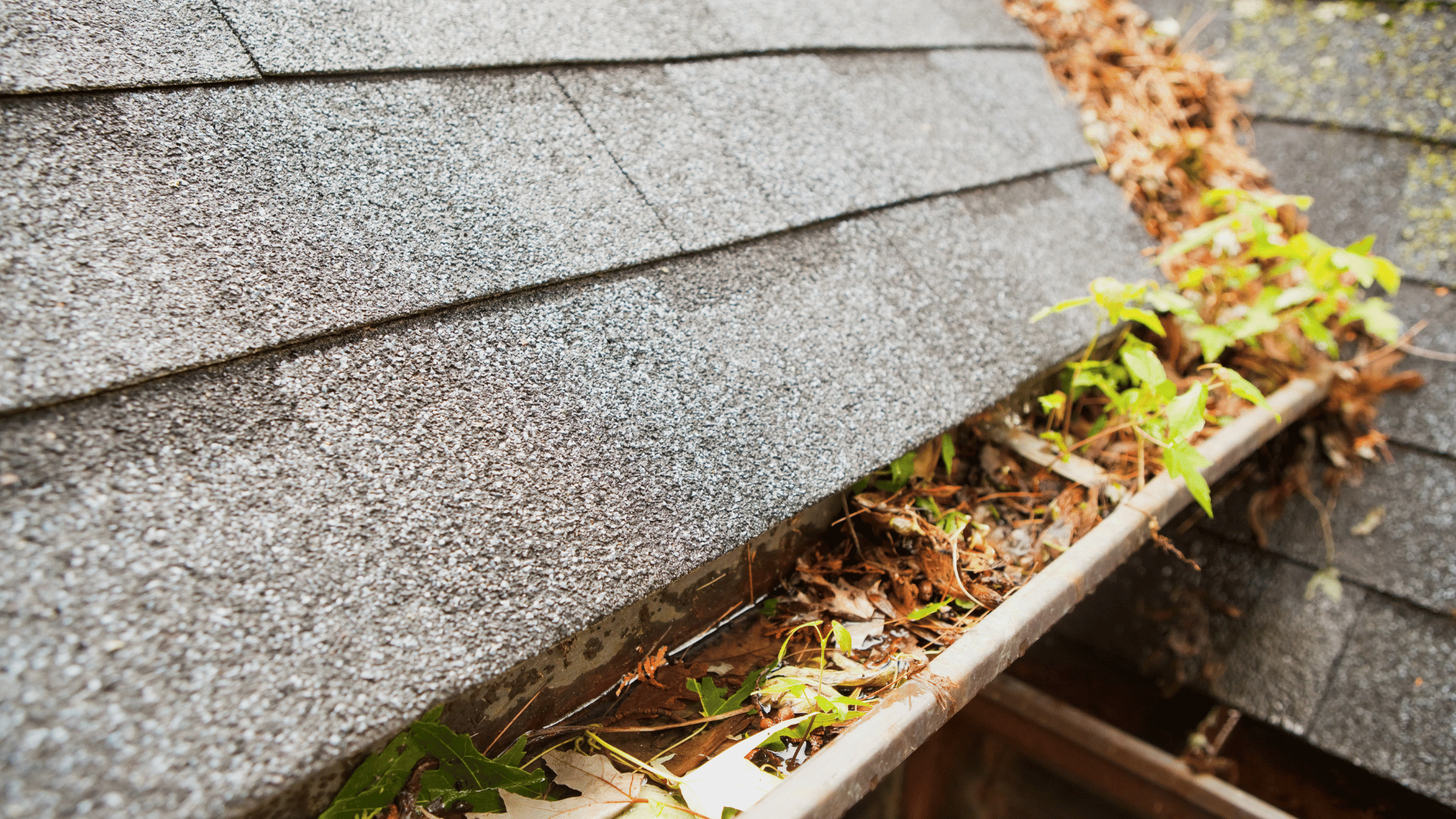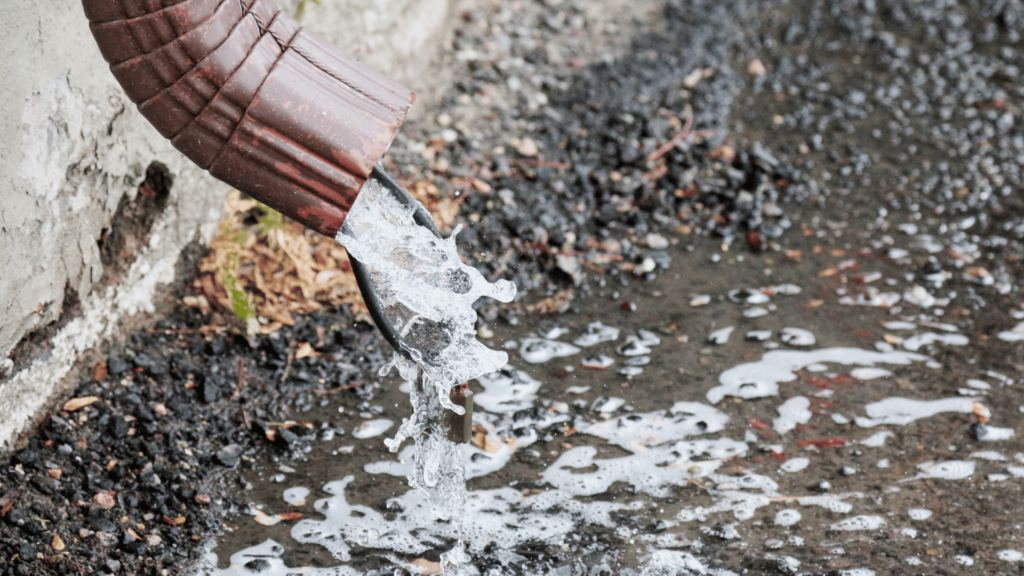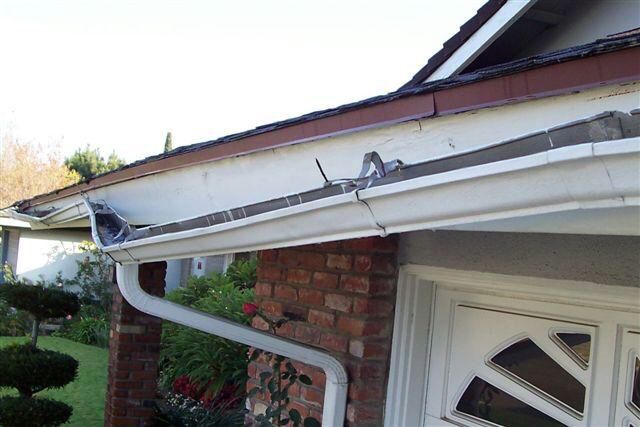
As the leaves begin to fall, your home’s gutters become the first line of defense against potential water damage. Fall is the prime time for homeowners to focus on their gutter cleaning to prevent clogs, leaks, and other issues that could compromise the safety and integrity of your home. Regular maintenance ensures that your gutters can handle the influx of leaves, debris, and autumn rainfall.
In this comprehensive guide, we’ll cover everything you need to know about maintaining your gutters this season. From cleaning techniques to spotting potential problems like damaged fascia boards and the importance of downspout replacement, we’ll provide the ultimate checklist to keep your home safe.
Why Gutter Cleaning is Essential in Fall
As the seasons change, your gutters collect more than just water. In fall, they become clogged with leaves, twigs, and other debris that can block water flow. Clogged gutters can lead to serious damage, including:
- Water overflowing onto your roof, leading to leaks or structural damage
- Soil erosion around your foundation, which can cause costly repairs
- Ice dams in the winter, which can damage fascia boards and roofing materials
Ensuring your gutters are clean during the fall helps avoid these issues, protecting both the exterior and interior of your home. The best part is, you don’t need to be a professional to maintain your gutters—although calling in experts like Auravex is always a good idea.
1. Clear Out Leaves and Debris
The first step in any fall gutter cleaning routine is to remove the debris that has accumulated. Leaves and twigs are the most common culprits, but you may also find bird nests, dirt, or even small pests in your gutters.
- Tools Needed: A sturdy ladder, gloves, a gutter cleaning scoop or trowel, and a bucket for debris.
- How To Do It: Start at the far end of your gutter and work your way toward the downspout, removing debris as you go. It’s important to take your time to ensure the gutter is thoroughly cleaned.
After removing all the large debris, use a hose to flush out any smaller particles. This will also help you identify whether the downspout is clogged.
2. Check and Unclog Downspouts

Your downspouts are responsible for directing water away from your home’s foundation. If they become clogged, the water has nowhere to go and will start backing up into your gutters, causing overflows and damage to your roof and fascia boards.
- How to Check: Run water from a hose through your gutters and monitor how quickly it flows out of the downspouts. If the water is slow to drain or overflows, your downspout is likely clogged.
- How to Clear: You can use a hose with high pressure, a plumbing snake, or even a special downspout cleaning tool to clear out the blockage.
For stubborn blockages, a downspout replacement might be necessary, especially if there is damage to the pipe itself. Regular inspection of your downspouts will ensure they are functioning properly and directing water away from your home’s foundation.
3. Inspect for Gutter Damage

After you’ve cleaned your gutters, the next step is to inspect them for any damage. Over time, gutters can crack, corrode, or become loose, especially if they’ve been overloaded with debris or water.
- Look for:
- Cracks or rust spots
- Sagging sections of the gutter
- Loose or missing brackets
- Leaks, especially near joints or corners
Minor cracks or holes can often be repaired with gutter sealant, but more extensive damage might mean it’s time to replace your gutters. Gutters that are rusted through or have multiple leaks will likely need to be replaced to maintain proper water flow and avoid future damage.
4. Check the Gutter Slope
For gutters to function properly, they need to have the correct slope, also known as “pitch.” The slope allows water to flow toward the downspouts rather than pooling in the gutters, which can lead to sagging or overflow.
- How to Check: Use a level to ensure that your gutters are sloped approximately a quarter-inch for every 10 feet of gutter. If the slope is incorrect, water will not drain properly, leading to potential leaks or blockages.
- How to Fix: Adjust the hangers or brackets to correct the slope. In some cases, you may need to reinstall sections of the gutter to restore the proper angle.
5. Flush the Gutter System
Even after clearing debris, it’s important to flush the entire system to remove any lingering dirt or small particles. This also helps you spot leaks or slow drainage areas.
- How to Flush: Use a garden hose starting at the end farthest from the downspouts. Let the water flow through the entire system, and observe any spots where water is pooling or draining slowly.
- Leak Detection: If water is leaking from seams or joints, these areas will need to be sealed. Use a silicone-based gutter caulk to seal any leaks, ensuring your gutters are watertight.
6. Consider Installing Gutter Guards

If you’re tired of frequently cleaning your gutters, installing gutter guards can be a smart investment. Gutter guards prevent leaves and other debris from entering the gutter, reducing the need for regular cleaning while still allowing water to flow through.
- Types of Gutter Guards:
- Mesh guards: These fit over the gutter and block debris while allowing water to pass through.
- Reverse curve guards: Designed to allow water to flow into the gutter while leaves and debris slide off.
- Foam or brush inserts: These sit inside the gutter, blocking debris while letting water filter through.
Gutter guards can greatly reduce the amount of time you spend on maintenance, but it’s important to remember that they don’t eliminate the need for occasional cleaning. Cleaning gutters with gutter guards can be tricky because they can still collect fine particles, which might require a once-a-year cleanout.
7. Inspect Fascia Boards
Your fascia boards, located behind the gutters, are often exposed to water if gutters overflow or leak. Over time, water exposure can cause the fascia boards to rot, which may lead to more expensive repairs if not caught early.
- How to Inspect: After cleaning your gutters, check the fascia boards for signs of water damage, such as peeling paint, rotting wood, or areas that feel soft to the touch.
- Repair Tips: If only a small section of the fascia board is damaged, it can be repaired with wood filler or replaced. If a larger area is affected, you may need to replace the entire section.
Maintaining your fascia boards is essential for the longevity of your roof and gutter system. Neglecting them can lead to more significant issues down the line.
8. Look for Pooling Water Around the Foundation

Even with properly functioning gutters and downspouts, it’s important to check the ground around your home for signs of poor drainage. Water pooling near the foundation can cause soil erosion and lead to foundation cracks or basement flooding.
- How to Fix: If water is pooling near your home, you may need to extend your downspouts further from the house or add splash blocks to direct the water away.
Proper drainage is key to preventing serious damage to your home’s structure, so always ensure that water is being directed well away from your foundation.
9. Safety Tips for Gutter Cleaning
DIY gutter cleaning can be dangerous, especially if you’re working on a multi-story home. To ensure your safety, follow these important tips:
- Ladder Safety: Use a sturdy, extendable ladder with a stabilizer. Always place it on even ground, and consider having someone hold it steady.
- Protective Gear: Wear thick gloves to protect your hands from sharp debris or insects. Safety goggles are recommended to keep dirt and debris out of your eyes.
- Professional Help: If you’re uncomfortable with heights or don’t have the proper equipment, it’s always best to call a professional service like Auravex to handle the job.
10. Call in the Experts
While DIY gutter cleaning is a feasible option for many homeowners, there are situations where it’s best to leave the job to professionals. If you have a large home, multiple stories, or a particularly clogged gutter system, calling in experts ensures that the job is done safely and thoroughly.

At Auravex, we go beyond the standard gutter cleaning services that most companies offer. We understand that maintaining a fully functional gutter system requires attention to every detail, which is why we offer a range of specialized services that set us apart from the competition.
Unlike many gutter companies that simply clear debris from inside the gutter, Auravex goes the extra mile by cleaning the exterior of your gutters, enhancing both functionality and curb appeal. For homes with challenging rooflines or multiple stories, we utilize advanced drone imagery to inspect and capture detailed photos of hard-to-reach areas, ensuring that every part of your gutter system is thoroughly assessed and maintained.
Protect Your Home This Fall
Your gutters play an essential role in protecting your home from water damage, especially in the fall when leaves and debris are abundant. Following this complete fall gutter cleaning checklist will ensure that your gutters are ready to handle the autumn rains, protecting your roof, foundation, and fascia boards from costly damage. Whether you choose to tackle the task yourself or hire professionals like Auravex, regular maintenance is key to a safe and secure home this season.
By taking the time to clean your gutters, inspect for damage, and consider gutter guards, you can prevent future issues and enjoy peace of mind as the seasons change.
Don’t wait until it’s too late—when leaves fall, it’s time to call Auravex!


